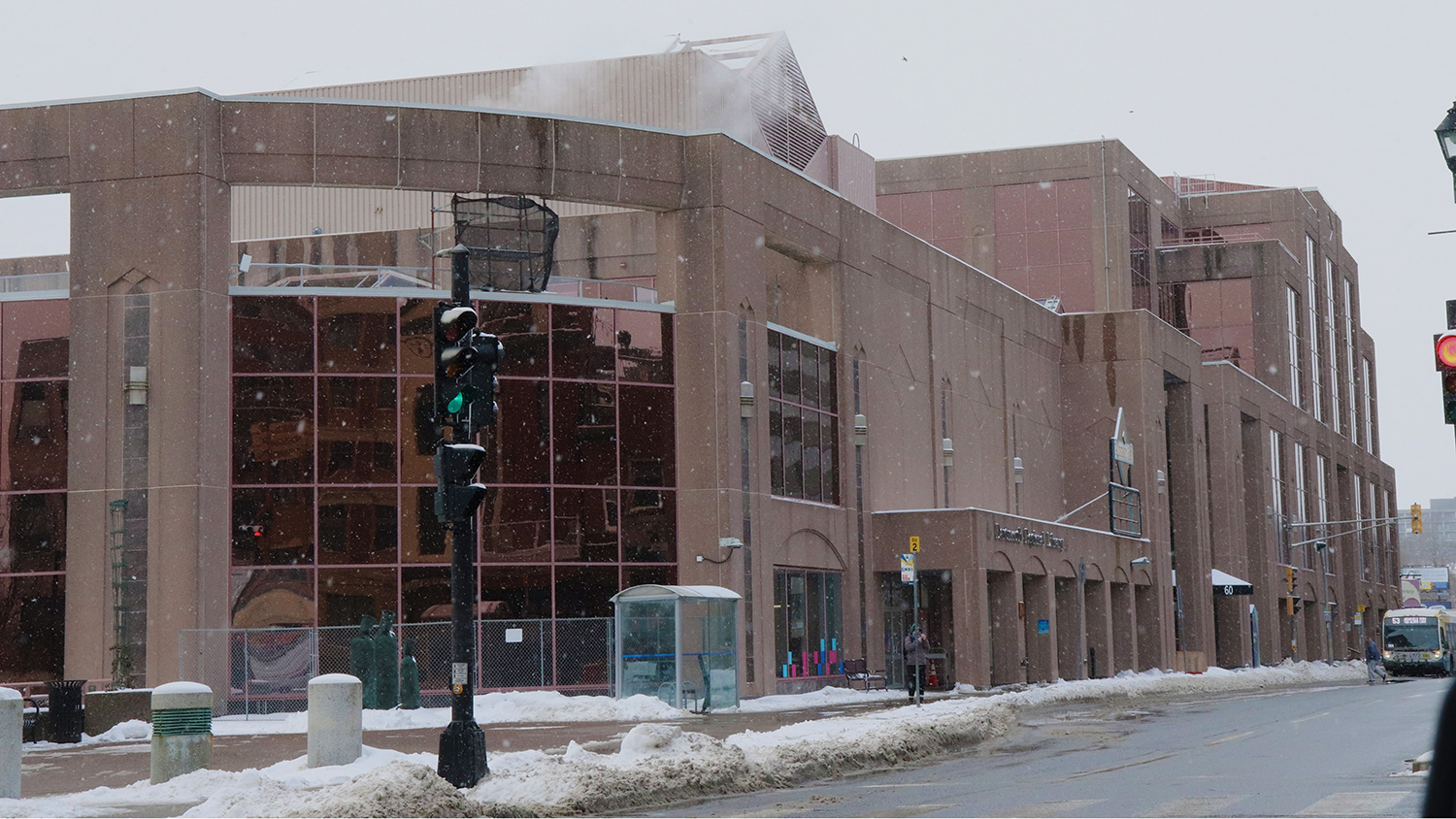Halifax spends $43 million on energy-efficient retrofits
Sackville Sports Stadium, Alderney Gate Complex among HalifACT prioritized sites

caption
Alderney Gate Public Library is a multipurpose facility in Dartmouth that was built in 1990. It has been earmarked for a environmentally-focused retrofit.Two of Halifax Regional Municipality’s more prominent public buildings are getting energy retrofits designed to make them more efficient and reduce emissions.
Sackville Sports Stadium and Alderney Gate are part of a $181.4-million program under HalifACT, the municipality’s climate initiative.
Under the municipality’s 2025/26 approved capital budget, HalifACT is spending $181.4 million in low-carbon infrastructure and energy efficiency, with a major focus on municipal building retrofits.
Retrofits focus on sealing buildings to prevent air leaks and increasing insulation in walls, attics, and roofs, said Kevin Boutillier, the municipality’s manager of clean energy.

caption
Kevin Boutilier, Halifax Regional Municipality’s manager of clean energy, says Sackville Sports Stadium and Alderney Landing “need some love.”Boutilier says these two buildings “need some love anyway.”
Chris Benjamin, senior energy co-ordinator at the Ecology Action Centre, acknowledged the high cost of retrofits.
“Retrofitting is not a cheap fix, but a necessary one,” Benjamin said in an interview.
HalifACT is a community-wide plan to reduce emissions and transition to a net-zero economy by 2050. It aims to build a more resilient and healthy future in Atlantic Canada.
$43 million of the efficiency budget is allocated to municipal building retrofits over the four-year plan, making it the largest investment in HalifACT’s strategy — more than transportation and other infrastructure projects.
Retrofits of Alderney Gate and Sackville Sports Stadium are expected to cost $11.35 million.
“Performing deep energy retrofits comes with an upfront premium,” Boutilier said. “It costs more than just doing a standard state-of-good-repair update.”

caption
Sackville Sports Stadium was built in 1989 and features an arena, an aquatic centre and a fitness centre.Municipal retrofits represent the largest single cost in the capital budget, especially as “buildings contribute the highest emissions across HRM and Nova Scotia,” said Boutilier.
“When deciding which buildings to upgrade, we prioritize those already in need of repairs,” he said.
HRM tracks energy consumption across all municipal buildings using a portfolio management system. This system identifies the buildings using the most energy and helps guide retrofit decisions.
“There are limited resources,” Boutilier said. “We’d love to retrofit every building this year, but we have to choose a few.”
HalifACT does not have direct control over every building, which requires them to collaborate with Halifax Regional Council to implement its plans.
The retrofits for Sackville Sports Stadium and Alderney Gate mark a key step in HalifACT’s strategy.
“Buildings are the third-largest source of greenhouse gas emissions in Nova Scotia,” said Benjamin. “These retrofits are labour-intensive, but they’re essential.”
About the author

Claire Kelly
Claire Kelly from Toronto is in her second year at Kings in the BJH Program.
